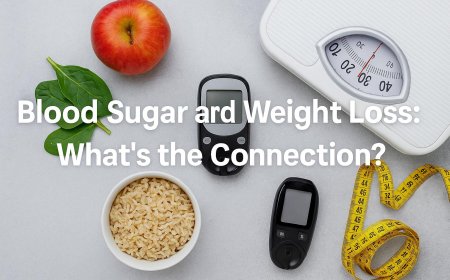How Teeth Whitening Works: The Science Behind the Smile
7 Surprising Truths You Didnt Know About a Brighter Smile
Have you ever glanced in the mirror, smiled, and thought, I wish my teeth were whiter? You're not alone. In fact, studies show that over 70% of Americans wish they had whiter teeth. From special events to everyday confidence, a dazzling smile can make a big difference. But have you ever wondered what really happens during a whitening treatment? Is it magicor science? Lets pull back the curtain and explore the fascinating process of how teeth whitening works and why its become one of the most popular cosmetic dental treatments in the world.
This in-depth guide unpacks everything you need to know: from the chemistry behind teeth stains to how professional and at-home treatments tackle discoloration, and even how to maintain your results. Whether youre in Lake Mary or anywhere else, the road to a whiter smile starts with understanding the process.
The Basics: Why Do Teeth Get Discolored?
Teeth are made up of several layers, but the outermost layerthe enamelis what gives your smile its color. Despite being the hardest substance in the human body, enamel is porous, which means it can absorb pigments over time.
Common causes of tooth discoloration include dietary habits (coffee, tea, red wine), tobacco use, poor oral hygiene, aging, medications like tetracycline, and even excessive fluoride exposure during childhood. These substances seep into the microscopic pores of your enamel, leaving behind stubborn stains that brushing alone cant remove.
There are two types of tooth stains: extrinsic and intrinsic. Extrinsic stains are surface-level and result from things like coffee or smoking. Intrinsic stains, on the other hand, are deeper and often result from aging, trauma, or medication. Each requires a different approach for effective whitening.
The Chemistry of Whitening: How Teeth Whitening Works
So, how teeth whitening works is a question of chemistry and biology. The process typically involves the application of bleaching agents, most commonly hydrogen peroxide or carbamide peroxide. These compounds break down into oxygen molecules that penetrate the enamel and react with the discolored molecules within the tooth.
When these oxygen molecules reach the dentin and enamel, they break the chemical bonds that hold the stain compounds together. This oxidation reaction lightens the color of the teeth without damaging the enamel structure.
Professional whitening products usually contain higher concentrations of peroxide, making them more effective and faster-acting. Over-the-counter products have a lower concentration and are designed for safety with less supervision, but they may take longer to show visible results.
Types of Whitening: In-Office vs. At-Home Solutions
In-office professional whitening treatments are the gold standard for fast and dramatic results. Dentists use highly concentrated bleaching agents, often enhanced with light or laser technology, to accelerate the whitening process. A typical session lasts about 6090 minutes, and results can be seen immediately.
At-home options include custom-fitted trays provided by your dentist, whitening strips, gels, or whitening toothpaste. While convenient, these methods typically require several days or even weeks of consistent use to achieve noticeable results.
Theres a reason professional options are more expensive: not only are they more potent, but theyre also tailored to your specific needs, minimizing risks like gum irritation or tooth sensitivity.
Teeth Whitening Lake Mary: Local Expertise Makes a Difference
If you're looking for personalized care, local treatment centers for teeth whitening Lake Mary offer a range of professional services suited to various needs. Cosmetic dentists in the area often combine cutting-edge technology with a personalized approach to achieve safe, effective results. Whether youre preparing for a big event or just want to feel more confident day to day, choosing a local professional ensures you get expert advice, monitored care, and long-lasting results.
Safety and Sensitivity: Is Whitening Harmful?
The most common side effect of teeth whitening is tooth sensitivity, which occurs when the peroxide penetrates the enamel and irritates the nerve endings in the dentin. This sensitivity is usually temporary and can be managed with desensitizing toothpaste or fluoride treatments.
Another concern is gum irritation, often caused by the bleaching agent coming into contact with soft tissues. Thats why its crucial to follow application instructions carefully and why professional whitening is generally saferits done under controlled conditions.
Its also important to understand that whitening does not work on crowns, veneers, or fillings, and results may vary depending on the type and cause of discoloration.
How Long Do Results Last?
Results from teeth whitening aren't permanent, but they can last anywhere from a few months to a few years depending on your lifestyle. Foods and drinks like coffee, wine, and berries can stain teeth again over time, and habits like smoking will undo whitening effects more quickly.
To maintain results, dentists recommend brushing twice daily with whitening toothpaste, rinsing after consuming staining foods, and doing occasional touch-up treatments. A custom take-home tray from your dentist can help prolong the effects of your professional treatment.
The Future of Teeth Whitening: Innovations and Trends
As dental technology evolves, so do whitening methods. Advances in laser technology, LED-enhanced treatments, and enamel-safe formulas are making the process faster, safer, and more effective. Theres also growing interest in nano-hydroxyapatite, a whitening alternative that also rebuilds enamel and reduces sensitivity.
At the same time, digital smile design software is helping dentists customize treatments more precisely based on your tooth shade, facial structure, and even skin tone. This ensures more natural, harmonious results that truly enhance your appearance.
Theres also a surge in interest in natural and organic whitening products, like charcoal toothpaste and coconut oil pulling. While these are popular on social media, scientific support for their effectiveness remains limited. They may offer slight polishing effects but lack the bleaching power of peroxide-based products.
Are You a Candidate for Teeth Whitening?
Not everyone is a good candidate for teeth whitening. If you have deep intrinsic stains, especially those caused by medication, whitening may have limited effect. Likewise, those with gum disease, cavities, or worn enamel should address these issues first before undergoing whitening.
A consultation with your dentist is the best way to determine if whitening is right for you. They can assess your oral health, discuss your goals, and recommend the most suitable method for achieving a radiant smile.
Final Thoughts: Brighten Your Smile, Boost Your Confidence
In the end, understanding how teeth whitening works empowers you to make informed decisions. Its not just about appearanceits about confidence, health, and self-expression. Whether you go for an in-office treatment in Lake Mary or try a professional at-home system, the key is to choose a safe, effective method that aligns with your goals.
With the right approach, guidance, and aftercare, that dazzling, healthy smile youve always wanted is well within reach. The science behind it may be complex, but the result is simple: a brighter, more confident you.











































